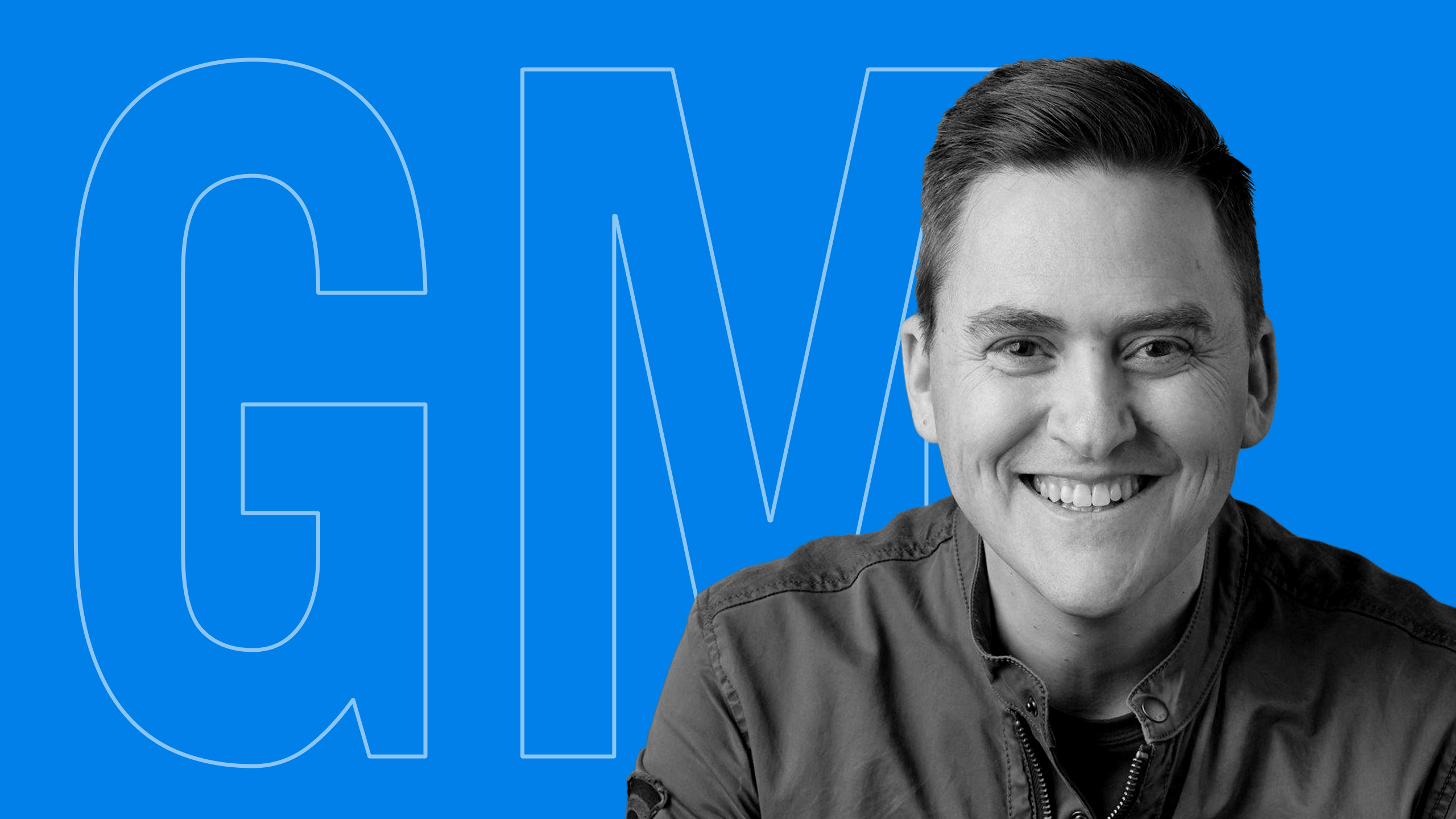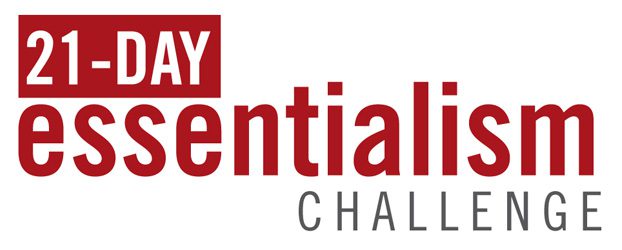Greg McKeown:
Welcome. I’m your host, Greg McKeown, and I am with you on this journey to unlearn the things that get in the way of reaching our highest point of contribution and to learn those things that will take us to the next level without burning out.
Have you ever thought that we can’t fix this burnout culture with a wellness app? Today, I’m going to share an inspiring story, something counterintuitive I’ve learned, and provide some actionable advice. By the end of this episode, you will be able to accomplish more by putting in less effort. Let’s begin.
Get a high return on the effort that you are putting into listening to this podcast by teaching one thing from this episode to one other person within the next 24 to 48 hours.
It’s the early evening of August 4th, 1984, the Los Angeles Olympic Games, it’s 7:00 PM, and 90,000 spectators fill the stadium. They are excited, exuberant for the highlight of any Olympic games, the final of the men’s 100 meters. For months leading up to the Olympics, there has been speculation about whether Carl Lewis can win four gold medals in the same Olympic games, the 100 meters, the 200 meters, the four by 100-meter relay, and long jump.
If he can do it, it is an astounding feat. If he can do it, it will be symbolically and personally important for him because he will repeat exactly the same achievement as was achieved by his hero, Jesse Owens, 48 years earlier in the 1936 games where Jesse Owens, as an African American, achieves the impossible in such a symbolic moment in front of Hitler.
Well, this inspired Carl Lewis’s whole life, and so the idea to finally be at the precipice, the edge of achieving it, and this is the most difficult of the four gold medals to achieve a single error at that level of performance. The best sprints in the world are there. One error is enough to mean that he’ll come in silver, bronze, or something else. He describes the moment as a lifetime of training for 10 seconds.
When I was growing up, I watched the documentary from the 1984 Olympics. It’s called the 16 Days of Flury, and I watched that time and time again, and it left a residue in my mind of these exceptional athletes who performed at such an elite level to try to learn the lessons of how they did it and what distinguished them to be able to achieve under such difficult circumstances.
So the Carl Lewis story is deeply entwined in my heart. It’s a part of the story of my youth in a sense. The gun goes off. What follows?
Carl Lewis ran differently from other sprinters. In general, he was not particularly fast over the first 10 meters, the same for 20, 30, 40, and even 50. Halfway through the race, in many of his races, he’s behind. In this particular race, it takes him until 75 meters to come even to the person who was in the lead up until that point. At 75 meters, he comes even. And in that moment, a huge smile comes across his whole face. It’s total relief, what he describes later as celebrating early. He knows it’s over. By that point, he knows that the momentum will carry him forward to what is, in fact, a convincing victory. He goes on to win the other three gold medals, repeating what happened to Jessie Owens.
And Mrs. Owens said to Carl Lewis that it was really meaningful for her to be able to see it because it was almost as if she was seeing Jessie Owens achieve that extraordinary moment in the Olympics that she wasn’t even able to attend in person herself. But when you go back and watch that race in slow motion, you notice something that is so distinct about Carl Lewis.
First is the look in his face. He’s so relaxed. There’s no Grimes, there’s no forcing anything, especially as you get to the midpoint or three-quarters of the way through the race as the faces of other sprints are screwed up and clenched, pushing themself absolutely to the hundred percent level. Carl Lewis is a picture of relaxation. There is a great deal more to what’s going on than meets the eye.
In fact, Hugh Jackman was just talking about this on my friend Tim Ferris’s podcast, and he makes this observation. He says what Carl Lewis did at the 50-meter mark, 60-meter mark was that he did nothing. His breathing was exactly the same. His form is exactly the same as has been between 25 to 50, whereas everyone else starts to push to the end, going to give a little extra harder, their face would scrunch up, their jaw would tighten, and their fists would start to clench. Carl Lewis stayed exactly the same, and then he would just breeze past them.
What’s going on here is that we have an insight literally into what enables high performers to outperform their competitors. And it is not what you have been sold. It has long been thought that maximum effort equals maximum results. And when I say long been thought, I mean if you haven’t actually heard that precise mindset, that precise phrase, you have certainly heard people say things like it, no pain, no gain.
Well, this is going to be really painful, really challenging, but it’s going to be worth it because it’s important. Well, we need to achieve something tremendous. So I need you to put in enormous effort, really pull out all the stops, give it 110%, give it 150%. I mean, the verbosity of it is striking. Who hasn’t heard a speech like that? Not just in sports but in management, not just in management, but in many other areas of human endeavor.
This is false.
What we know now is optimal effort equals maximum results. What we could call the 85% rule. An all-out sprint all the time isn’t possible. So to advocate for it is to advocate for, excuse me, but it is a lie. However, often it’s repeated, it does not bend reality. And whenever it’s stated as if that is reality, a cost somewhere hidden will be paid. It will be paid in the toxic culture. It will be paid in people’s personal relationships outside of work.
It will be paid in the strain between a manager and the employees on the team. It will be paid in the quality of the decisions being made or the lack of it. One cannot escape the way that reality really works, and it simply does not work in the way that we have been told. And as I see you in my mind’s eye, and I know that you carry heavy burdens, serious challenges, even if you don’t talk about them openly, especially the things that you don’t talk about openly. Those things that you suffer from in silence, in quiet desperation, and yet despite all of those burdens, you’re still torn to try to do more, to push yourself ever harder. And then despite this idea of maximum effort equals maximum results being reinforced and asked for by the people around you and often by yourself despite all of that, then somebody comes along, maybe some well-intended manager, some effort that began in the pandemic, well will just get a wellness app that will fix this burnout culture.
Well, it won’t.
It takes a mindset shift in people and managers in organizational cultures everywhere. This old mindset, it’s wrong, insecure overachievers everywhere, myself included, really believe the old maxim. But the inconvenient truth is that it doesn’t work. It’s a limiting mental model. We’ve been conned.
What actually works is what I’ve mentioned here, the 85% rule, instead of trying to go all out 100%, which causes this strain not gain, you operate at 85% of your capacity. Think of Timothy Gallwey in his marvelous book, The Inner Game of Tennis. Gallwey himself was a tennis player, a coach. He was also paying attention to what really brings elite performance and what doesn’t, not what the 1980s motivational speakers screamed from the stage, not what’s been printed up on those excellence posters about giving everything, giving your all, killing yourself to get the life you want. I mean, what sort of nonsense is that?
He was paying attention to how it really works. And what he found is the players seem to have two selves, the conscious and the subconscious self. He found that the conscious self was the part that did the learning of whatever the skill is. That’s the part that you are intentionally doing, whether it’s a new problem you’re trying to solve or an opportunity that you’re pursuing, something that you are trying to add to your skill set. And when you are in that conscious self, what you feel is effortful.
Quoting now from an article by Carl Hetman, “Gallwey, a longtime tennis player and coach, found that the players he worked with improved most when he coached them less. In other words, the more he stepped back and let them play, the faster the game developed. Noticing the surprising result, Gallwey began trying to figure out what was really going on. He eventually noticed that players seemed to play with two selves, the conscious and the subconscious self. The conscious self is what’s in charge of learning a particular skill or doing something for the first few times. This self is apparently when you are intentionally working through a new problem or trying to get the hang of something, when the conscious self is in the driver’s seat, things feel effortful. The subconscious self follows from this natural learning process. Taking what you’ve learned from the conscious self’s work, the subconscious self is responsible for executing learned behaviors.” (1)
Gallwey himself writes it this way, “Great music and art are said to arise from the quiet depths of the unconscious. The true expressions of love are said to come from a source which lies beneath words and thoughts. So it is with the greatest efforts in sports. They come when the mind is as still as a glass lake.”
Back to Heckman. “When we do our best work, we are not thinking about it. If we want to consistently perform well at anything, it requires that we train our different selves to cooperate in a way that quiets the conscious self and brings out the learned capabilities of the subconscious self.” (2)
I write about this in Effortless that for all we’ve been told about giving it absolutely everything and all of the time in practice, that is a root cause of this burnout culture that we see still almost everywhere around us. There is a point of diminishing returns on effort, a point even of negative returns on effort, so that the extra effort we put in past a point, let’s call that point, the 85% point, will give us poorer results.
Have you not noticed this yourself? That your very best performance of any kind happens not in that state of strain and struggle and forcing it. Forcing it is where things break. It’s where you make mistakes. So I’ve been taking myself the 85% challenge this week, and I’m going to put it to you to do the same. Join me in this challenge.
I had a keynote this week, and as I was about to go to it, I’m getting myself in the state to be able to perform. And without noticing, I was pushing myself to the hundred percent, and I could feel that strain. I could feel that additional stress, that extra pressure. And as I said to myself, okay, well, just do this at 85%, what happened is that I moved into a better state, a more relaxed state, a more present state. I could think instead of myself and how I had to do this perfectly here, and now, I was able instead to focus on them, to think about them.
I wasn’t so self-conscious about the whole experience. I could enjoy the journey, and I did. It was one of the most special experiences I have had in a long time, really being able to share a conversation, not a presentation, not a keynote in that traditional sense, but for hundreds of us together, we felt something that I believe was rare and I can tie directly to this 85% challenge.
Within the same day, I had podcast interviews scheduled. I had a key negotiation with a potential podcast relationship. Stay tuned for a possible announcement in the future. And as I was finishing my work at Cambridge, I was riding my bike. That’s my life now, home in order to make it in time for this important meeting. And I was running a few minutes late, and I was racing along and again, remembered 85% effort, and that meant I slowed down just a little, but also my mental state relaxed a little, and I realized this is going to be just fine.
As it turns out, we started our meeting. It was almost exactly five minutes into the meeting, and there’s absolutely no problem. We were able to proceed and continue, finish. I think a couple of minutes early, and great results came of it. The whole meeting, the same thing, be 85%.
The 85% rule isn’t just a nice way for insecure overachievers to live. It’s actually more effective. It allows you to be at your best. So here’s what I’m saying, the wellness app, it’s not going to do it, and I’m not actually against that, but that’s not the core of the issue. This is a mindset problem first, a tool set problem second. And this mindset challenge, this is the thing that I am trying to take on. This is why I wrote Effortless, was to start a conversation that could become a movement to be able to change this burnout culture everywhere. You could think of the book as your high-performance guide to healthy productivity. And seriously, I need it.
Thank you. Really thank you for listening. What is one idea you heard today in this conversation that you could share with someone else who is trying to achieve in a way that will actually make achievement harder within the next 24 to 48 hours?
If you haven’t subscribed yet to the 1 Minute Wednesday newsletter, now is your invitation to do it. Go to gregmckeown.com, and you will find a way to be able to sign up for free. You will get a newsletter carefully curated with you in mind that you can read in one minute. The intention of that newsletter is to provide the most valuable one minute that you will spend online each week, and it is growing like crazy right now. We’re past 101,000 subscribers, and it is growing constantly. So I’m going to keep you updated as we go along.
Join the effortless and essentialist movement as we prepare to go into 2023. Wouldn’t that be something if you could design your life in 2023 around the principles of Effortless and Essentialism, what could happen? Just think of what could happen for you.
If you have found value in this episode, please write a review on Apple Podcasts. The first five people to write a review of this episode will receive access to the Essentialism Academy. You just go to essentialism.com/podcastpromo for extra details. I’ll see you next time.
- Hechtman, C. (2021). The 85% Rule: How To Get More By Doing Less. [online] The Growth Gambit. Available at: https://thegrowthgambit.com/85-percent-rule/ [Accessed 6 Dec. 2022].
- W Timothy Gallwey (2015). The inner game of tennis : the ultimate guide to the mental side of peak performance. London: Pan Books.







